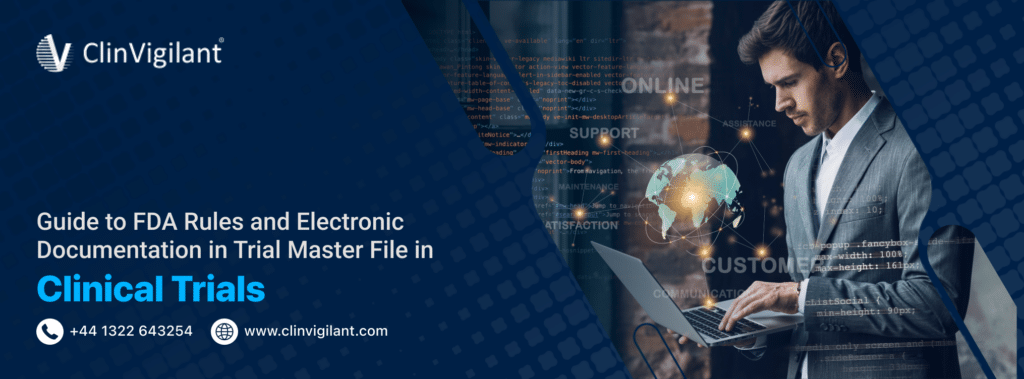
Saving people in clinical investigations is key. The Food and Drug Administration (FDA) follows strict laws, making sure vital steps are taken. This includes thorough tracking, recording, and holding essential info for the trial’s management. This post tackles the ins and outs of FDA rules. It talks about how important documents and data are in research.
We’ll also learn about the methods used by various groups— sponsors, contract research organizations, monitors, and research sites—to efficiently gather, share, and hold this valuable info. By navigating these regulatory waters and understanding the tools available, research professionals can ensure adherence to standards, fostering ethical and successful clinical trials.
Understanding the Rules for Writing Research Paper and Staying Within Regulations
Three important rules make a big difference in what’s needed for clinical Trial Master File In Clinical Research papers:
- ICH Good Clinical Practice (GCP): This international rule gives ethical and scientific guidelines for creating, carrying out, recording, and sharing results of studies involving people. GCP shows exactly what data and documents need to be gathered and kept in a way that’s ready for checking.
- FDA 21 CFR Part 312: This rule gives clear guidelines about the roles, job duties, and paperwork needed for new investigational drugs (INDs).
- FDA 21 CFR Part 11 (often simply called Part 11): Part 11 mostly has to do with electronic records that are made, changed, kept, stored, brought back, or sent out. As eTMF In Clinical Trials systems are commonly used by clinical research teams to manage trials, ensuring compliance with Part 11 is crucial.
What is an Electronic Trial Master File (eTMF)?
An eTMF, also known as an electronic Trial Master File In Clinical Trials, is a technology solution specifically developed to efficiently organize, gather, store, monitor, and archive all necessary and vital study documents. Serving as a digital alternative to the traditional trial master file (TMF) format, the eTMF has become the prevailing industry norm. In the past, the TMF primarily existed in physical paper form.
The TMF constitutes a compilation of mandatory documents pertaining to a specific clinical trial, serving to demonstrate the trial’s adherence to regulations and encompassing all associated activities for evaluation by regulatory authorities. Just as a journey consists of various stages, the clinical trial process requires diligent capturing and updating of each step in a central repository, namely the TMF.
As per the FDA and international GCP guidelines, all studies necessitate the existence of a Trial Master File In Clinical Research (TMFs), but there is no mandatory requirement for them to be electronic. It is the sponsors’ responsibility, as regulated, to ensure the proper maintenance, accessibility, and correctness of the TMF. In case a sponsor decides to opt for an electronic TMF (eTMF), they bear the responsibility of ensuring the system’s security and compliance with 21 CFR Part 11 validation.
Which Documents are Collected and Stored in an eTMF?
The collection and categorization of documents in the eTMF In Clinical Research comply with GCP guidelines. This includes the following:
- Essential study documents: These encompass the protocol, protocol amendments, investigator’s brochure, procedures and manuals, visit guidance, and more.
- Training documentation and materials: This comprises certificates, videos, supporting content, and other relevant resources.
- Funding documentation: Contracts, budgets, negotiations, and similar materials fall under this category.
- Safety documentation: Safety letters, serious adverse event (SAE) reports, and other relevant documents are included.
- Ethics committee’s documents: This section includes protocol amendments, approvals, communication, and any other relevant materials.
- Audit or monitoring documents: Onsite visit records, audit findings, and similar documents are collected and stored.
- Participant information: Informed consent forms, visit guidance, brochures, recruitment materials, patient diaries, and other relevant data fall under this category.
- Site-specific documents: Site CVs, training documentation, site standard operating procedures (SOPs), and similar materials are stored in the eTMF.
Which Systems Can Integrate with an eTMF?
The majority of documents that are required to be collected and stored in an eTMF For Clinical Trials originate from sources outside of sponsor systems. In cases where a research site stores study documents in an electronic investigator site file (eISF), those documents would need to be directed to the corresponding eTMF.
Various software and platforms, such as an electronic Institutional Review Board (eIRB) system, an eRegulatory (eReg) management system, email programs, and clinical trial management systems (CTMS), are capable of integrating with an eTMF In Clinical Trials. By integrating these systems, the need for manual transfer of documents between systems is reduced, along with the potential for errors.
What is an Electronic Investigator Site File (eISF)?
The Electronic Investigator Site File (eISF) is a technology solution that has been developed to efficiently manage and organize the necessary documents required for a specific research study at an individual site. This digital tool enables the collection, storage, tracking, and archiving of essential study documents in electronic format. In the past, the Investigator Site File (ISF) used to be maintained in physical paper form.
The eISF collaborates with the sponsor’s electronic Trial Master File In Clinical Trials, which holds and manages data associated with each research site involved in the clinical trial. In addition to the sponsor’s eTMF, it is the responsibility of the research site to properly store and archive their ISF.
What Comprises the Contents of an eISF?
Similar to an eTMF In Clinical Trials, an eISF is responsible for gathering and storing regulatory documents pertaining solely to a specific research site. The documents included within an eISF may consist of the following:
Essential study documents:
- The protocol and its amendments
- The investigator’s brochure
- Procedures and manuals
- Visit guidance, and so on.
- Site-specific documents:
- CVs of the individuals associated with the site
- Training documentation
- Standard operating procedures (SOPs), particular to the site, etc.
Site-specific participant recruitment and engagement information:
- Informed consent forms
- Visit Guidance
- Brochures
- Recruitment materials
- Patient diaries, etc.
- Moreover, the eISF may also encompass site-specific monitoring or audit records.
What Sets an eTMF Apart from an eISF?
An eISF refers to a specific set of documents that need to be gathered and stored within an eTMF In Clinical Research. A research site staff member compiles these documents. On the other hand, all eISF documents present in the eTMF are collected and compiled by the research sponsor.
Conclusion
Protecting people and following all rules are key to success in the ever-changing world of clinical trials. The Food and Drug Administration (FDA) watches over and enforces laws that supervise all important stages of the trial process. This guide breaks down FDA rules simply, showing how electronic paperwork helps in clinical trials.
To know the place of rules, you have to understand these three basic rules: ICH Good Clinical Practice (GCP), FDA 21 CFR Part 312, and FDA 21 CFR Part 11. Each rule has a special role in ethical research, explaining roles and duties and setting up standards for electronic records.
With a deep grasp of how electronic systems link together, researchers can tackle detailed FDA rules and paperwork needs. The next steps in clinical trials rely on blending technology, sticking to ethics, and meeting tough norms. This balanced view encourages learning and protects those people involved in the drive for scientific advancements.

